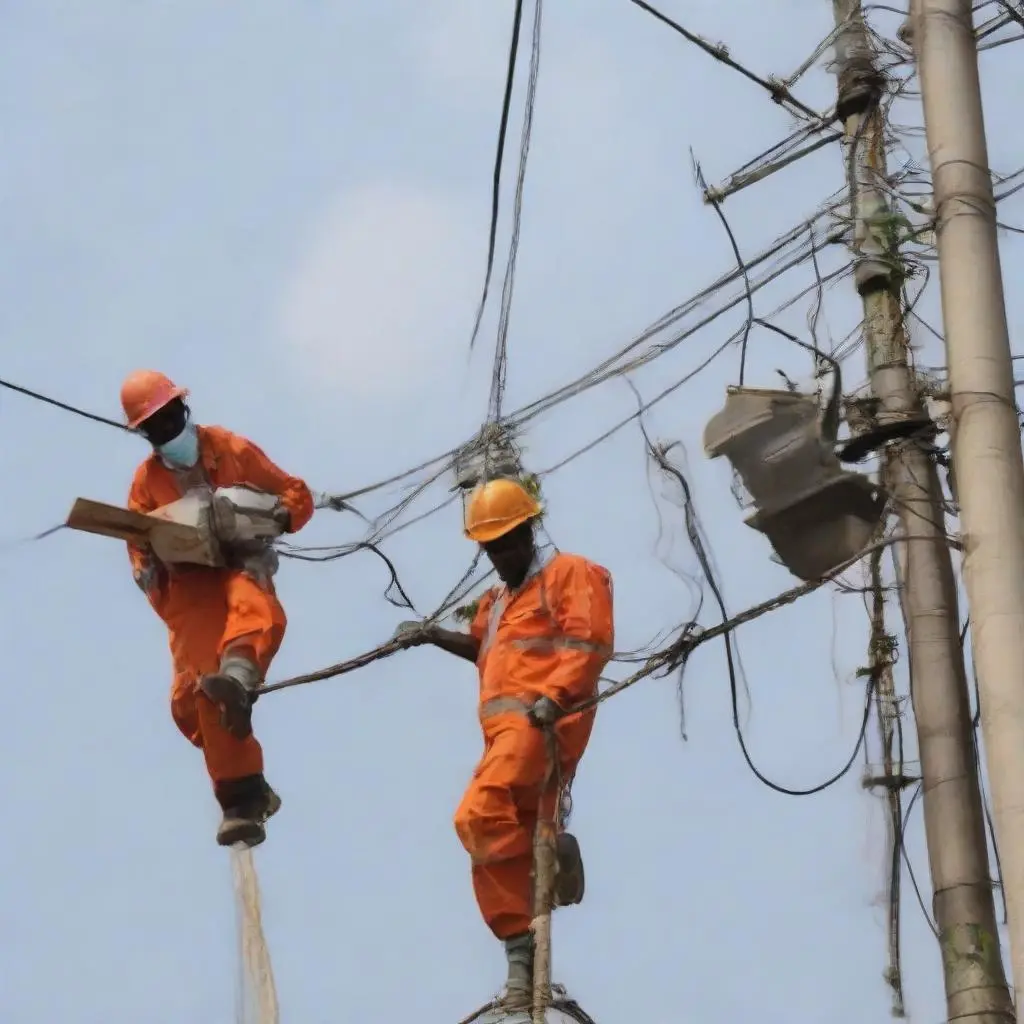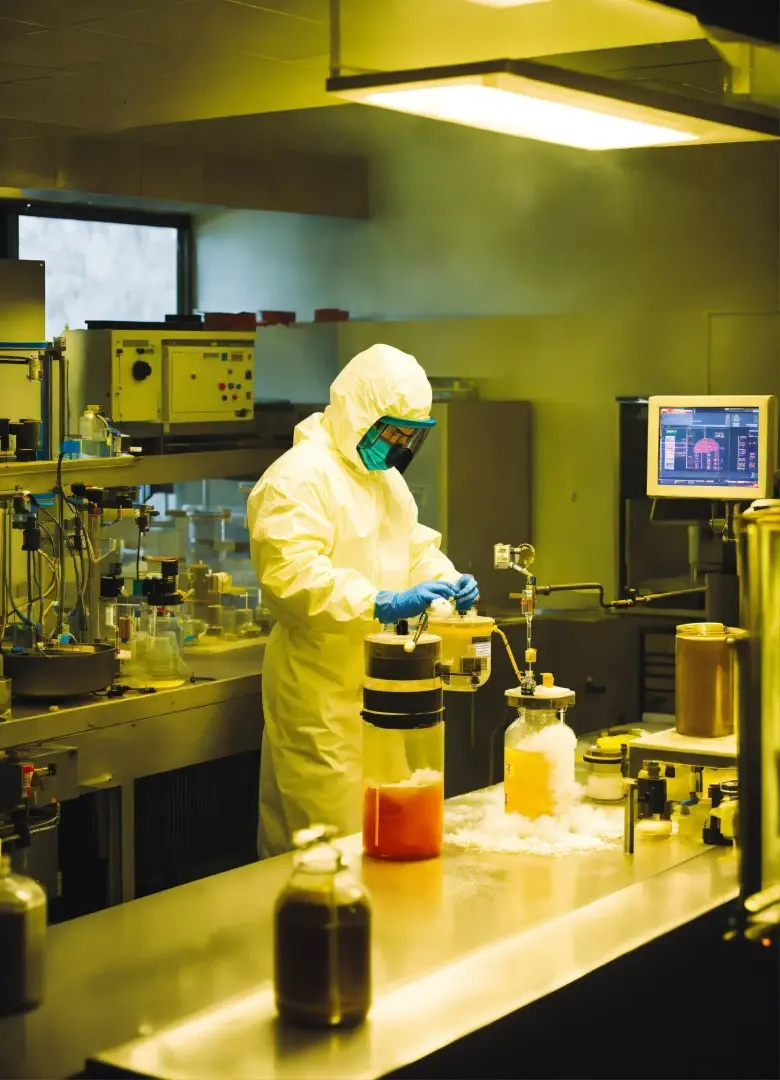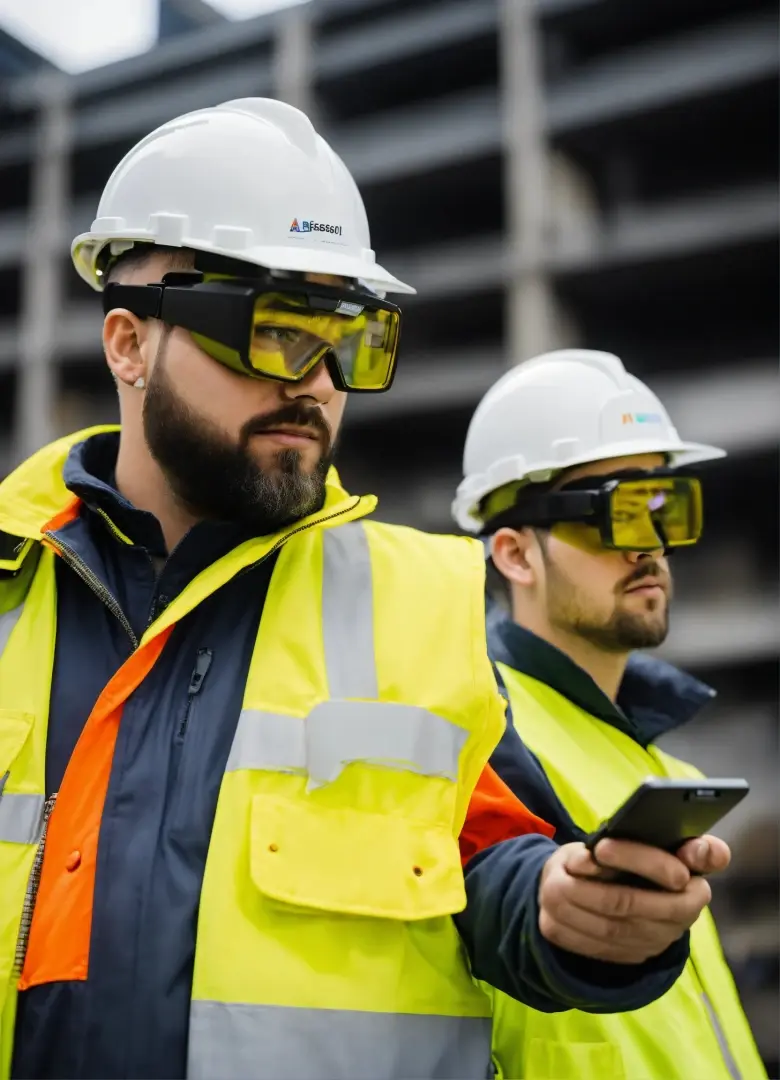A Safety Primer
In the realm of occupational health and safety, personal protective equipment (PPE) stands as a critical defense line against a myriad of workplace hazards. From controlling exposure to chemical hazards to minimizing the risk of COVID-19 transmission, the role of PPE in safeguarding workers cannot be overstated. Understanding what PPE is and its significance is not just about compliance with standards but about fostering a culture of safety and protection in every workplace environment. It becomes imperative to comprehend the full scope of what does PPE stand for and its impact on maintaining a secure and healthy workplace.

This article will delve into the essentials of PPE, highlighting its importance in the workplace and the benefits it offers to both employees and employers. You will gain insight into the different types of PPE, such as respirators and protective attire, designed to control various occupational hazards. Furthermore, it will guide you through implementing an effective PPE program, focusing on standards and best practices to ensure workplace safety. As we explore the intricacies of PPE and its role in occupational health, you will be better equipped to appreciate its value and implement comprehensive safety measures in your organization.
Understanding Personal Protective Equipment (PPE)
Definition and Purpose
Personal Protective Equipment (PPE) encompasses protective gear for vital body parts such as the eyes, head, ears, hands, respiratory system, body, and feet. Its primary function is to shield individuals from injury and infection risks while reducing exposure to chemical, biological, and physical hazards. PPE acts as a crucial line of defense when other safety measures, like engineering and administrative controls, fall short in mitigating risks. The National Institute for Occupational Safety and Health (NIOSH) positions PPE as the final defense strategy in its hierarchy of controls, emphasizing its use when other methods are inadequate 108.
Types of PPE
- Face and Eye Protection: This category includes safety goggles and face shields, essential for tasks that pose risks of eye damage or vision loss due to toxic liquid sprays, splashes, and burns 10.
- Respiratory Protection: Comprising full-face respirators, self-contained breathing apparatus, gas masks, N95 respirators, and surgical masks, this type of PPE is vital for tasks that risk inhaling harmful materials, including gases, chemicals, and potentially virus-laden droplets 10.
- Skin and Body Protection: Incorporates headgear such as hard hats for falling objects, safety vests and suits for extreme conditions and toxic exposures, and gloves and safety boots for hand and foot safety against cuts, burns, and electrical hazards 10.
- Fall Protection: Safety harnesses and lanyards are crucial for tasks involving heights, where the risk of falling could result in severe injury or death 10.
- Hearing Protection: Ear muffs and plugs are necessary for environments with potentially damaging noise levels that can lead to hearing loss 10.
Employers are mandated by the Occupational Safety and Health Administration (OSHA) to provide PPE to their employees to protect them against workplace hazards that could lead to injuries or illnesses. The effectiveness of PPE hinges on its proper design, construction, maintenance, and fit, ensuring it provides adequate protection while being comfortable enough to encourage regular use. A comprehensive PPE program, including hazard assessment, selection, maintenance, and employee training, is essential for its successful implementation 1112.
Importance of PPE in the Workplace
Protection from Injuries and Illnesses
Personal Protective Equipment (PPE) is essential in minimizing exposure to workplace hazards that can lead to serious injuries and illnesses. This includes protection from chemical, radiological, physical, electrical, and mechanical dangers 131521. Properly designed and fitting PPE is crucial, as it significantly reduces the risks of being dangerously exposed 1321. When other safety measures are insufficient, PPE serves as a critical defense, ensuring worker safety 1321.
Regulatory Compliance
Employers are mandated by regulations such as those set by the Occupational Safety and Health Administration (OSHA) to provide and maintain PPE for their employees. This includes conducting hazard assessments and ensuring that PPE fits correctly to offer the necessary protection 1618. Compliance not only prevents workplace injuries and illnesses but also shields organizations from potential fines, legal liabilities, and other compliance-related issues 18.
Long-Term Health Considerations
Continuous exposure to workplace hazards can lead to long-term health issues. Implementing a comprehensive PPE program addresses these risks by selecting appropriate PPE, maintaining it, and training employees on its use. This program is vital for the ongoing effectiveness of PPE, which plays a significant role in preventing chronic health conditions associated with workplace hazards 1321.
Benefits of Using PPE
Preventing Workplace Accidents
Personal Protective Equipment (PPE) serves as a crucial barrier, reducing the likelihood of workplace accidents by shielding employees from potential hazards like falling objects, chemical spills, and sharp objects. This protective measure significantly minimizes the risk of severe injuries, ensuring a safer working environment 2223252728.
Improved Worker Confidence and Productivity
The implementation of PPE not only ensures physical safety but also boosts worker morale and productivity. Employees equipped with the necessary protective gear can perform their duties without fear, leading to enhanced focus and efficiency. This heightened sense of security fosters a positive work atmosphere, contributing to overall job satisfaction and a reduction in absenteeism due to injuries 2223252627.
Legal and Financial Advantages
Adhering to safety regulations by providing appropriate PPE not only helps in avoiding legal repercussions and penalties but also aids in maintaining a company's reputation. Financially, investing in quality PPE reduces the direct and indirect costs associated with workplace injuries and illnesses, such as medical expenses, legal fees, and lost productivity, ultimately saving the company significant amounts in potential losses 2326282930.
Implementing an Effective PPE Program
Hazard Assessment and Selection
To ensure the safety of your workers, the initial step involves conducting a hazard assessment to identify workplace dangers, both physical and health-related 38. This process includes a thorough walkthrough of the facility to pinpoint potential hazards in categories such as fall hazards, chemical exposures, and harmful dust 38. Following this, it's essential to organize and analyze the data to select the appropriate types of PPE that offer a higher level of protection than the minimum required 38. Remember, all PPE must be of safe design, well-maintained, and fit comfortably to encourage use by employees 38.
Training and Proper Usage
Once the appropriate PPE has been selected, the next crucial step is training employees on its correct usage. This includes understanding when PPE is necessary, how to properly don, adjust, wear, and remove it, and recognizing its limitations 37. Training should cover the care, maintenance, useful life, and disposal of PPE 37. It's vital to ensure that employees demonstrate a clear understanding of the training and can use the PPE correctly before being assigned tasks that require it 34. Regular retraining is necessary when there are changes in the workplace or PPE type 34.
Maintenance and Monitoring
The effectiveness of a PPE program is contingent on proper maintenance and continuous monitoring. This involves regular inspections to identify damaged or malfunctioning PPE before use 39. A well-defined procedure should be in place for workers to obtain new PPE or replacement parts for damaged items 39. Maintenance includes inspection, care, cleaning, repair, and proper storage of PPE 39. It's crucial to wear well-maintained PPE as poorly maintained or malfunctioning equipment can provide a false sense of security, potentially being more dangerous than wearing no protection at all 39.
Conclusion
Throughout this article, we have explored the critical importance of Personal Protective Equipment (PPE) in maintaining a safe and healthy work environment. By delving into its various types, from facial and respiratory protection to gear designed for fall and hearing safety, we underscored PPE's pivotal role as a shield against workplace hazards. The necessity of implementing a comprehensive PPE program, encompassing hazard assessment, proper selection, training, and maintenance, cannot be overstated. Such measures not only ensure compliance with safety regulations but also significantly mitigate the risk of injuries and illnesses, ultimately safeguarding the well-being of employees.
Reflecting on the broader implications, it is clear that the effective use of PPE goes beyond mere regulatory compliance, playing a key role in fostering a culture of safety and responsibility within the workplace. As organizations continue to navigate the challenges posed by various occupational hazards, the insights and best practices outlined here serve as a vital resource for developing more resilient safety protocols. Encouraging further research and continuous improvement in PPE programs will undoubtedly enhance their effectiveness, contributing to safer working conditions and healthier workforces across industries.
FAQs
Why is it critical to wear Personal Protective Equipment (PPE)?
Wearing Personal Protective Equipment (PPE) is crucial because failing to do so, or not using it correctly, can lead to severe health and safety risks for workers. Incorrect or absent PPE can result in exposure to workplace hazards, limited vision, or mobility, which can compromise job performance.
What is the purpose of PPE for workers?
The primary purpose of Personal Protective Equipment (PPE) is to reduce workers' exposure to serious workplace injuries and illnesses. These may arise from various hazards, including chemical, radiological, physical, electrical, mechanical, or others present in the workplace.
Is it mandatory to use PPE at work?
Yes, the Occupational Safety and Health Administration (OSHA) mandates employers to supply suitable PPE to employees who might be exposed to blood or other infectious materials, such as bloodborne pathogens. OSHA may also require PPE to safeguard against other types of hazards in the workplace.
How important is it to wear the required PPE on the job?
Wearing the required PPE is among the most critical responsibilities of a job. There are no valid excuses for not wearing PPE, as the risks involved in not doing so are significant. Employees will receive training on the correct selection and use of PPE necessary for their specific job duties.
References
[1] - https://www.osha.gov/personal-protective-equipment
[2] - https://www.osha.gov/sites/default/files/publications/osha3151.pdf
[3] - https://safetyculture.com/topics/ppe-safety/
[4] - https://www.osha.gov/personal-protective-equipment
[5] - https://www.applerubber.com/blog/4-reasons-its-important-you-use-ppe-in-the-workplace/
[6] - https://safetyservicesdirect.com/blog/the-importance-of-ppe-in-the-workplace/
[7] - https://www.osha.gov/personal-protective-equipment
[8] - https://safetyculture.com/topics/ppe-safety/
[9] - https://www.osha.gov/sites/default/files/publications/osha3151.pdf
[10] - https://safetyculture.com/topics/ppe-safety/
[11] - https://www.osha.gov/sites/default/files/publications/osha3151.pdf
[12] - https://www.osha.gov/personal-protective-equipment
[13] - https://www.osha.gov/personal-protective-equipment
[14] - https://www.cdc.gov/niosh/learning/safetyculturehc/module-3/7.html
[15] - https://www.osha.gov/sites/default/files/publications/ppe-factsheet.pdf
[16] - https://www.osha.gov/laws-regs/regulations/standardnumber/1910/1910.132
[17] - https://www.osha.gov/sites/default/files/publications/osha3151.pdf
[19] - https://www.ncbi.nlm.nih.gov/pmc/articles/PMC10425167/
[20] - https://www.ncbi.nlm.nih.gov/pmc/articles/PMC9037050/
[21] - https://www.osha.gov/personal-protective-equipment
[22] - https://www.osha.gov/personal-protective-equipment
[25] - https://www.premiersafety.com/blog/personal-protective-equipment-importance-and-benefits/
[26] - https://www.gvs-rpb.com/blog/productivity
[28] - https://cf-t.com/blog/how-ppe-can-save-your-company-money
[29] - https://o2employmentservices.com/the-importance-of-personal-protective-equipment-in-the-workplace/
[30] - https://www.osha.gov/businesscase
[31] - https://ehs.ncsu.edu/personal-protective-equipment-ppe/ppe-hazard-assessment/
[32] - https://www.osha.gov/sites/default/files/training-library_ppe_assessment.pdf
[33] - https://www.osha.gov/sites/default/files/publications/osha3151.pdf
[34] - https://ehs.ncsu.edu/personal-protective-equipment-ppe/personal-protective-equipment-training/
[35] - https://safetyculture.com/topics/ppe-safety/ppe-safety-training/
[36] - https://cloudassess.com/blog/ppe-training/
[37] - https://www.osha.gov/personal-protective-equipment
[38] - https://www.osha.gov/sites/default/files/publications/osha3151.pdf
[39] - https://www.ccohs.ca/oshanswers/prevention/ppe/designin.html
[40] - https://www.ncbi.nlm.nih.gov/pmc/articles/PMC7809954/
[41] - https://www.applerubber.com/blog/4-reasons-its-important-you-use-ppe-in-the-workplace/
[42] - https://safetyculture.com/topics/ppe-safety/
[43] - https://www.applerubber.com/blog/4-reasons-its-important-you-use-ppe-in-the-workplace/
[44] - https://www.osha.gov/personal-protective-equipment
[45] - https://www.ccohs.ca/oshanswers/prevention/ppe/designin.html
Start writing here...





